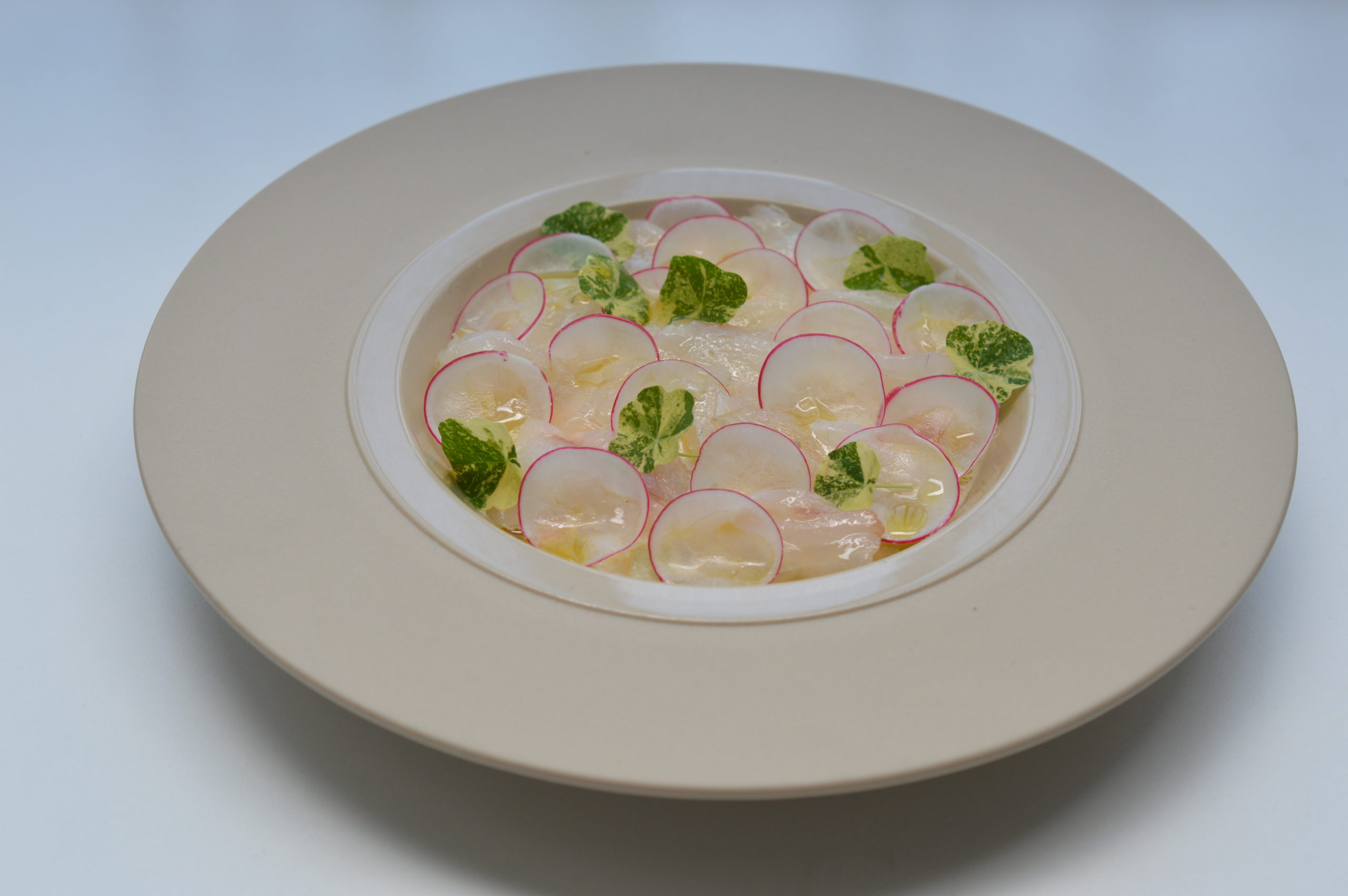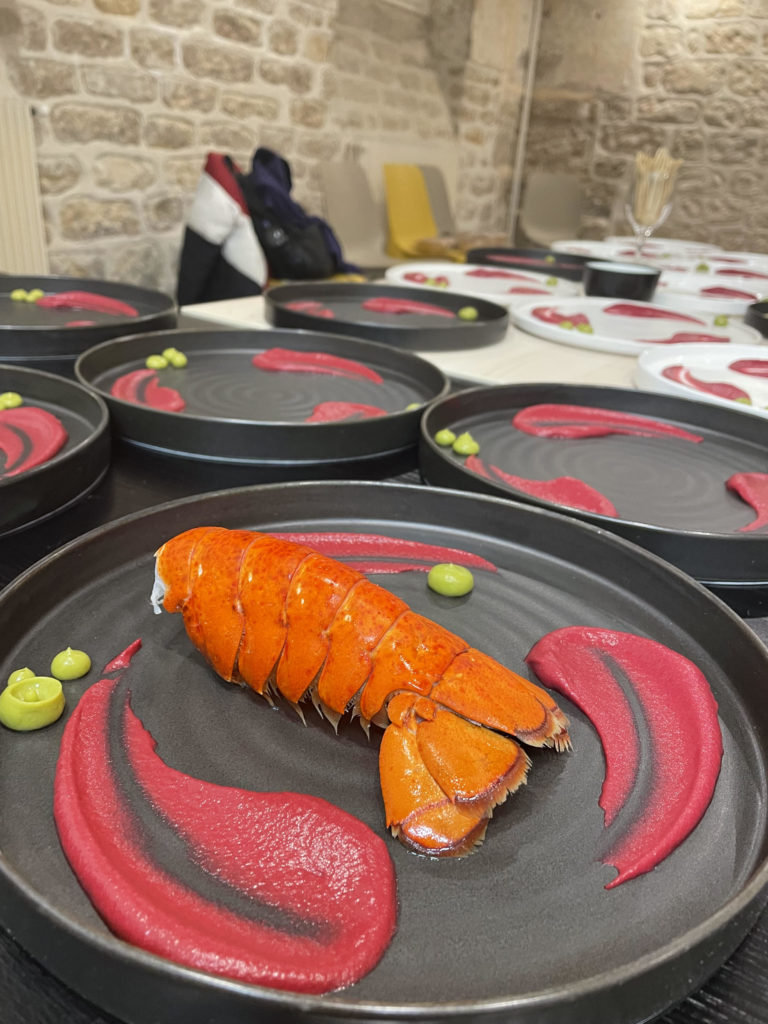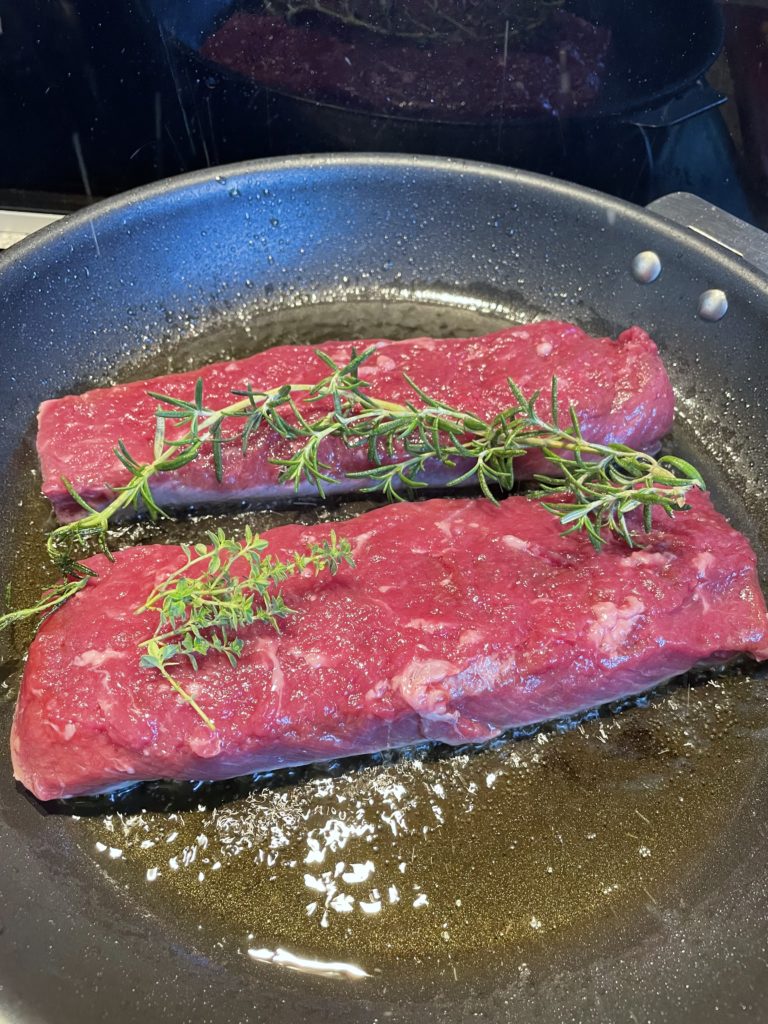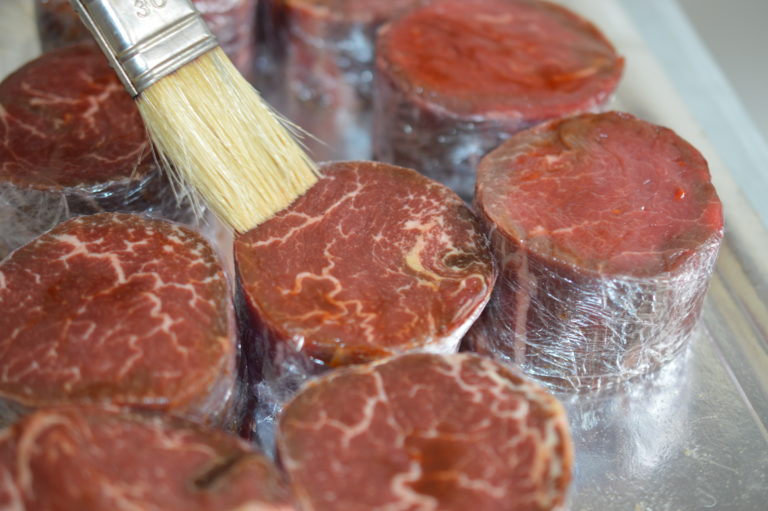Season of Scallops
Savor the Excellence of Scallops: A Seasonal Delight to Enjoy
Scallops: A Culinary Delight from the Sea
Gastronomic pleasures offered by the sea are abundant and diverse, and among them, scallops stand out as a delicacy that makes the taste buds of food lovers around the world water. The season of the scallop, or Pecten maximus for those fond of scientific nomenclature, is a much-anticipated time of year for fans of refined cuisine. With its silky texture, subtle flavor, and culinary versatility, the scallop has firmly established itself as a star of gourmet menus. In this article, we will explore in detail why and when it is optimal to enjoy this ocean treasure.
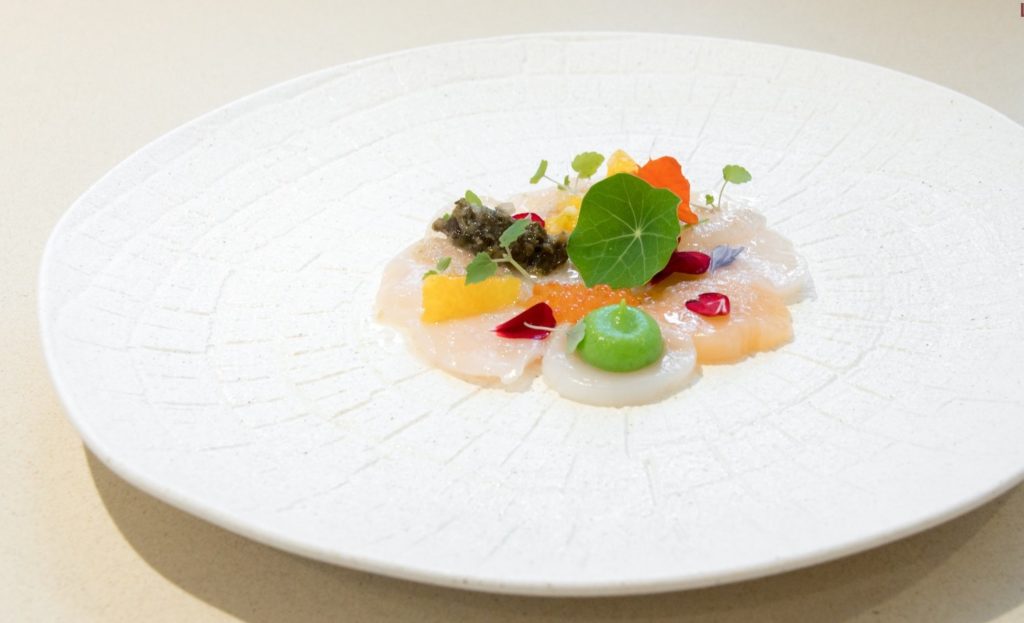
The Scallop Season: A Special Moment to Cherish
Autumn marks the beginning of a gastronomic season eagerly awaited by seafood connoisseurs. From October 1st to May 15th, the cold and rich waters of our seas offer an abundance of scallops, ready to be harvested and enjoyed. This period is carefully defined to ensure sustainable stock management and preserve the ecological balance of marine ecosystems.
The strict regulations surrounding scallop fishing are a testament to the importance placed on conserving this species. With a minimum catch size of 11 cm, fishermen strive to capture scallops that have reached maturity, allowing younger individuals to grow and contribute to the species’ long-term viability. This environmentally respectful approach ensures that every scallop caught and savored has had time to develop its characteristic flavor and unique texture.
Tasting Scallops: A Culinary Journey
Tasting scallops is an incomparable culinary experience. Their tender and delicate flesh lends itself to an endless variety of preparations, from the simplest to the most elaborate. Food enthusiasts can let their creativity run wild by pairing this marine jewel with various ingredients, creating dishes that awaken the senses.
The delicate flavors of scallops are often enhanced by subtle accompaniments such as flavored butters, fresh vegetable purées, or sauces made with white wine. Citrus fruits, with their refreshing acidity, add a vibrant touch to this luxurious dish. Moreover, their firm and velvety texture pairs harmoniously with contrasting textures, like crunchy vegetables or whole grains.
Among the most popular preparations are scallop carpaccios, where the scallop is sliced thinly and served raw, accompanied by a touch of lemon and olive oil. Pan-seared scallops offer a warm and flavorful alternative, with a slight caramelization on the surface of the flesh. And of course, scallops gratinée in the oven with a golden breadcrumb crust are an irresistible indulgence.
Let me know if you’d like any further refinements!
Season, Quality, and Sustainability
Knowing when to eat scallops is not just about adhering to the harvest period, but also supporting sustainable and responsible practices. Overfishing and unsustainable fishing methods can have a disastrous impact on marine ecosystems and fish populations. By prioritizing seafood products from sustainable and certified sources, we contribute to the preservation of marine biodiversity for future generations.
Today, many restaurants and fish markets are committed to promoting sustainability by sourcing seafood from responsible suppliers. It is therefore recommended for scallop enthusiasts to look for these certifications when making their purchases. By choosing labeled products, you are guaranteed to contribute to environmental protection while enjoying a dish of exceptional quality.
A Seasonal Delight to Look Forward To
In short, the scallop season is a time of year eagerly anticipated by fine dining enthusiasts. From October 1st to May 15th, this marine delicacy captivates our taste buds with its creamy texture and subtle flavor. By adhering to fishing regulations and choosing sustainable sources, we can savor this ocean treasure with a clear conscience.
From carpaccios to gratins, the preparation possibilities are endless, each highlighting the unique qualities of the scallop. So, as the season approaches, get ready to explore new flavors, experiment with bold combinations, and celebrate the marriage of sea and land in every bite of this exquisite marine gem.
Scallops, with their delicate flesh and sweet flavor, offer a range of enticing culinary possibilities. Here are a few popular methods for cooking scallops that highlight their unique taste:
Pan-Seared Scallops:
- Carefully dry the scallops with paper towels.
- Heat a pan over medium-high heat with a bit of olive oil or butter.
- Add the scallops to the preheated pan and cook for about 1 to 2 minutes on each side, until they become lightly golden.
- Season with salt, pepper, and optionally a drizzle of lemon juice or balsamic vinegar.
Scallop Carpaccio
- Slice the scallops into thin slices and arrange them on a plate.
- Drizzle with high-quality extra virgin olive oil and fresh lemon juice.
- Sprinkle with sea salt, freshly ground black pepper, and finely chopped herbs like dill or chives.
- Serve with extra lemon wedges and croutons for a touch of crunch.
Scallop Gratin:
- Prepare a light béchamel sauce by melting butter in a saucepan, adding flour to create a roux, and then gradually incorporating milk until you achieve a creamy consistency.
- Add grated cheese, such as Gruyère or Parmesan, to the béchamel sauce to enhance its flavor.
- In individual dishes or a baking dish, arrange the scallops and pour the béchamel sauce over them.
- Sprinkle with breadcrumbs and additional grated cheese.
- Bake in a preheated oven at 180°C (350°F) for about 10 to 15 minutes, until the top is golden and the scallops are cooked through.
Scallop Salad:
- Quickly sear the scallops in a hot pan with a little oil until they are cooked to perfection.
- Arrange the scallops on a bed of mixed greens, arugula, or lettuce.
- Add complementary ingredients such as citrus, avocado, nuts, or berries to provide texture and flavor.
- Drizzle with a light vinaigrette made from balsamic vinegar or lemon juice
No matter which cooking method you choose, it is important not to overcook the scallops, as they can become rubbery and lose their delicate texture. Cooking times vary depending on the size of the scallops, but in general, they cook very quickly.
Remember, creativity in the kitchen is encouraged, so feel free to experiment with herbs, spices, and complementary ingredients to create unique and delicious dishes that highlight the scallops.
Scallops are delicate treats that can be enhanced by a variety of accompaniments. Here are some ideas to bring out the flavor and texture of scallops:
Parsnip or Celeriac Purée
A root vegetable purée, such as parsnip or celeriac, adds a touch of sweetness and creaminess that perfectly complements the delicacy of the scallops.
Creamy Risotto:
A creamy Parmesan or saffron risotto makes a rich and flavorful accompaniment that contrasts beautifully with the texture of the scallops.
Crispy Vegetables
Crisp green vegetables such as asparagus, green beans, or snow peas add freshness and texture to your dish.
Pumpkin or Squash Purée:
A pumpkin or squash purée adds a sweet flavor and vibrant color to the entire dish.
Leek Fondue
Leeks melted in butter create a flavorful and delicate base for the scallops.
Fresh Pasta
Fresh pasta, like tagliatelle or pappardelle, served with a light sauce made of cream or butter, creates a simple yet elegant dish.
Sautéed Mushrooms with Scallops
Sautéed mushrooms, such as wild mushrooms or oyster mushrooms, add umami richness to your dish.
Whole Grains
Whole grains like quinoa, barley, or farro provide a nutritious and textured base for scallops.
Beurre Blanc
A light and tangy beurre blanc sauce is a classic to accompany scallops, highlighting their natural flavor.
Asian-Style Sautéed Vegetables
Asian-style sautéed vegetables, with ingredients like ginger, garlic, and soy sauce, create a delightfully spicy combination with scallops.
Orange or Lemon Sauce
A light sauce made with orange or lemon juice adds a tangy and refreshing note.
When choosing an accompaniment for scallops, look for flavors that complement rather than overpower their delicate taste. Experiment with different ingredients and preparation methods to create a balanced and delicious culinary experience.

Scallop Coral, What to Do With It?
Scallop coral, also known as “sea urchin coral,” is a delicious and prized part of this shellfish. It can be used in various culinary preparations to add a distinctive flavor and color. Here are some ideas for what you can do with scallop coral:
Scallop Coral Butter for Serving with Scallops
Scallop Coral Butter: Mix the coral with softened butter, chopped garlic, fresh herbs like parsley or tarragon, and a drizzle of lemon juice. This flavored coral butter can be used to coat pan-seared scallops or flavor fresh pasta.
Scallop Coral Sauce
Creamy Coral Sauce: Use the coral to prepare a creamy sauce. Sauté the coral in butter, add thick cream, a pinch of saffron, and possibly some white wine. Let it simmer until the sauce thickens, then serve it over scallops or other seafood.
Scallop Coral Velouté
Velouté of Coral: Blend the coral with vegetable or fish broth to create a rich and flavorful velouté. Season with spices and herbs of your choice, then serve hot with croutons.
Scallop Coral Ravioli
Scallop Coral Ravioli: Use the coral as a filling for homemade ravioli. Mix it with ricotta, Parmesan, and herbs, then stuff the ravioli. Serve them with a light butter and sage sauce.
Pasta with Scallop Coral
Pasta with Coral: Mix the coral with al dente cooked pasta and a light sauce made of olive oil, garlic, red chilies, and parsley. Add grated Parmesan for a final flavorful touch.
Scallop Coral Omelette
Scallop Coral Omelette: Incorporate the coral into an omelette for a unique marine flavor. Mix it with beaten eggs, fresh herbs, and cheese before cooking the omelette.
Scallop Coral Spreads
Spreads: Turn the coral into spreads by blending it with cream cheese, crème fraîche, or yogurt. Serve these spreads on toast, blinis, or crunchy vegetables.
Risotto with Coral
Risotto with Coral: Incorporate the coral into a creamy risotto to give it a pink color and delicate flavor. Season with fish stock, shallots, and white wine.
As a Garnish
Garnish for Seafood: Use the coral as a garnish for other seafood such as oysters, mussels, or scallops.
When cooking with scallop coral, it’s important to handle it carefully to avoid overcooking. The coral is a delicate and tender part that can quickly become rubbery if overcooked. Experiment with these ideas to discover new ways to enjoy this delicious part of the scallop.
Scallops and Their Benefits
Scallops are not only appreciated for their delicate taste and refined texture but also offer several nutritional benefits for health. Here are some advantages that scallops can bring to your diet:
Low in Calories: Scallops are relatively low in calories, making them an ideal choice for those looking to control their calorie intake while enjoying a source of high-quality protein.
Lean Protein Source: The protein in scallops is rich in essential amino acids and of high quality. It plays an important role in growth, cell repair, and maintaining muscle mass.
Rich in Vitamins and Minerals: Scallops contain essential vitamins and minerals like vitamin B12, selenium, and zinc. Vitamin B12 is crucial for nerve health and red blood cell formation, while selenium and zinc are important for immune system function and cellular health.
Source of Vitamin D: Scallops contain small amounts of vitamin D, which is important for bone health, hormonal regulation, and immune function.
Low in Saturated Fat: The fats found in scallops are mainly unsaturated, making them a lean protein choice and contributing to keeping saturated fat levels low in your diet.
Rich in Omega-3s: Scallops contain omega-3 fatty acids, which are beneficial for heart and brain health. Omega-3s have anti-inflammatory properties and may help reduce the risk of cardiovascular diseases.
Low in Carbs: Scallops are naturally low in carbohydrates, making them an appropriate choice for people following a low-carb diet or seeking to control their blood sugar.
Easy to Digest: The tender flesh of scallops is easy to digest, making them a well-tolerated seafood option for many people.
It’s important to note that, like all foods, moderation is key. While scallops offer many nutritional benefits, it’s also important to vary your diet to benefit from a wide range of nutrients from different food sources. If you have allergies, sensitivities, or specific concerns regarding seafood, it’s recommended to consult with a healthcare professional before incorporating scallops into your diet.

